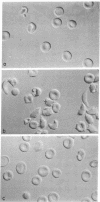Abstract
The recent use of urea as a treatment for the crisis phase of sickle-cell anemia has prompted us to investigate the possibility that cyanate, which is in equilibrium with urea in solution, might itself prevent the sickling of erythrocytes. We have found that in contrast to the high concentration of urea (1 M) needed to prevent reversibly the in vitro sickling of 80% of the cells, potassium cyanate (0.01-0.10 M) irreversibly inhibits sickling to the same extent. The prevention of sickling is a function of the amount of [14C]cyanate incorporated into acidprecipitable protein (0.1-1.0 mol of cyanate per mol of hemoglobin). Most of the radioactivity is accounted for by carbamylation of the NH2-terminal valine residues of hemoglobin; there is no detectable carbamylation of the lysine or cysteine residues. The reactive species, HN=C=O (isocyanic acid), may be an analog of O=C=O since both compounds bind to the same valine residues of hemoglobin. Deoxygenated sickled cells also incorporate [14C]-cyanate, but the sickling is not reversed. Oxygenation results in normal morphology in 75% of these cells. Upon subsequent deoxygenation, these cells remain normal. Potassium cyanate (5 mM) was also found to be an effective inhibitor of the gelling of deoxyhemoglobin S.
Keywords: urea, hemoglobin S, carbamylated valine
Full text
PDF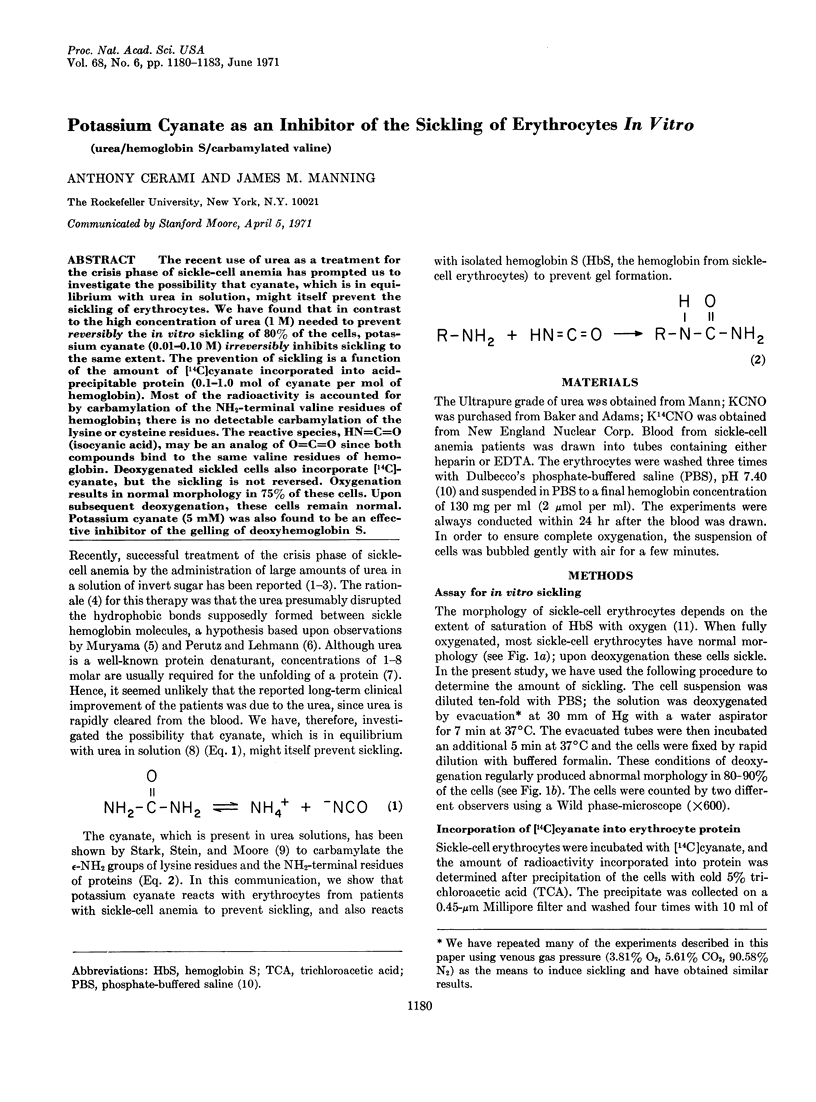
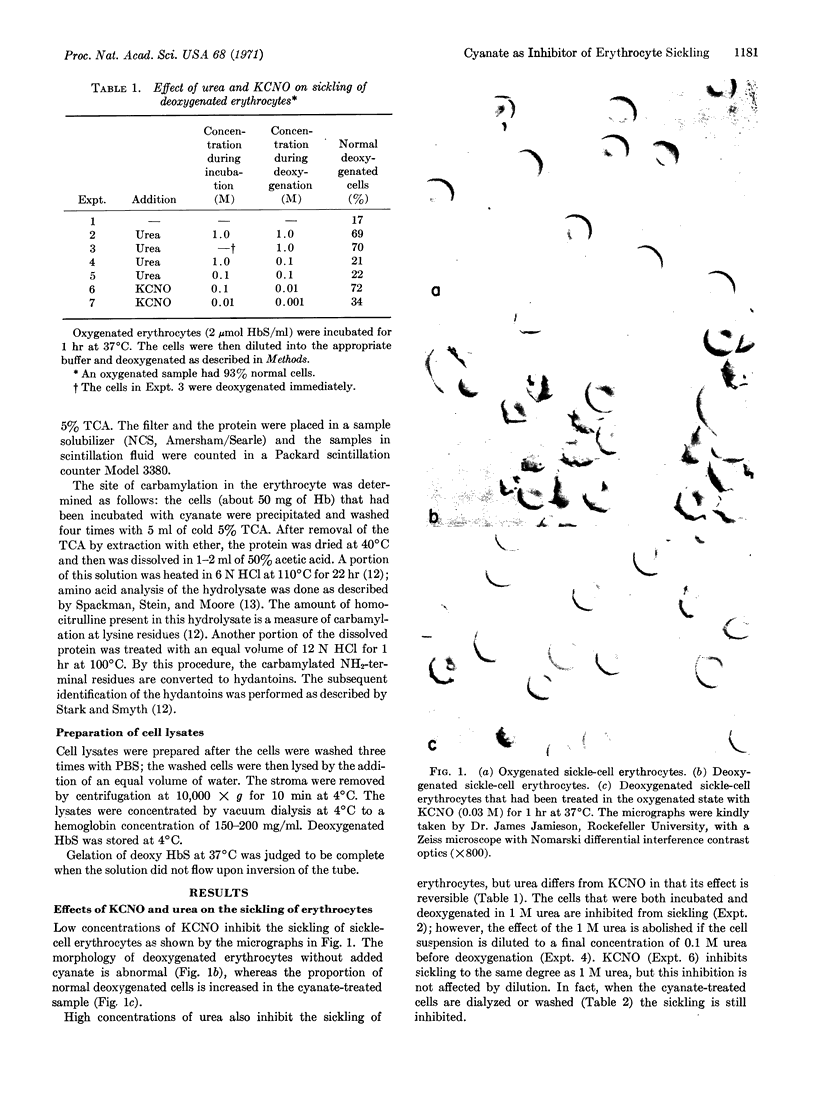
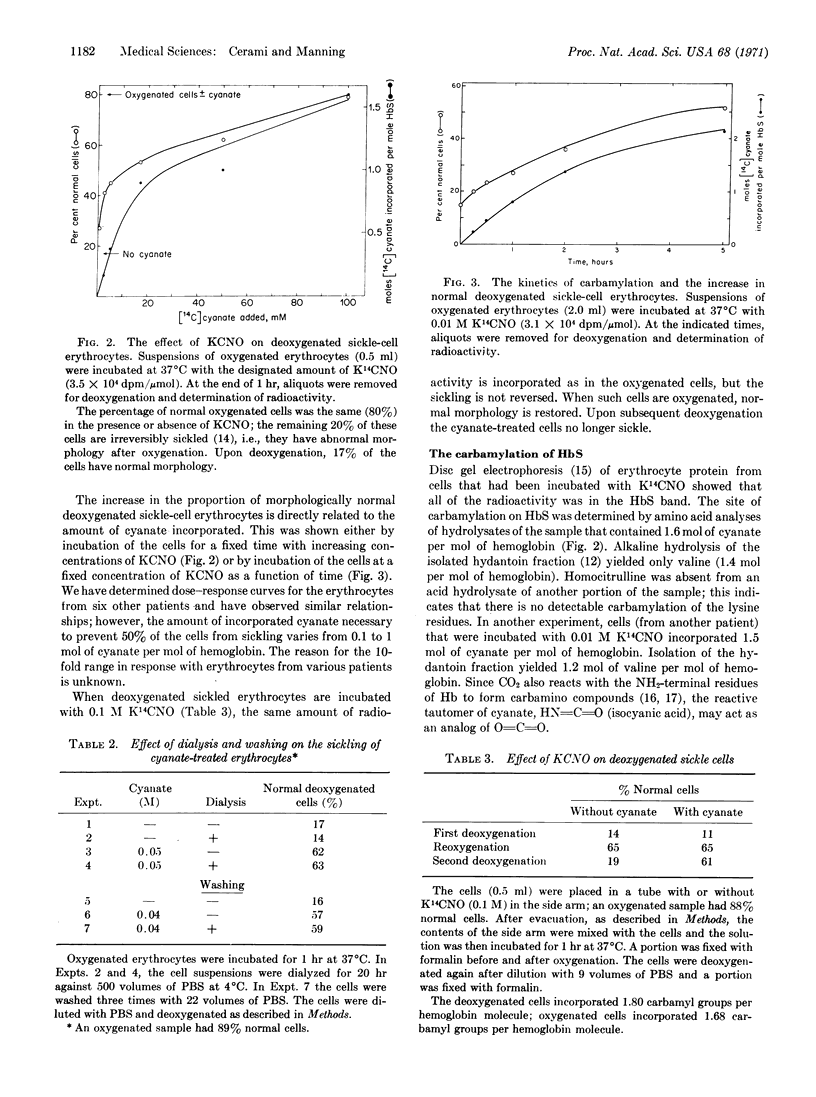
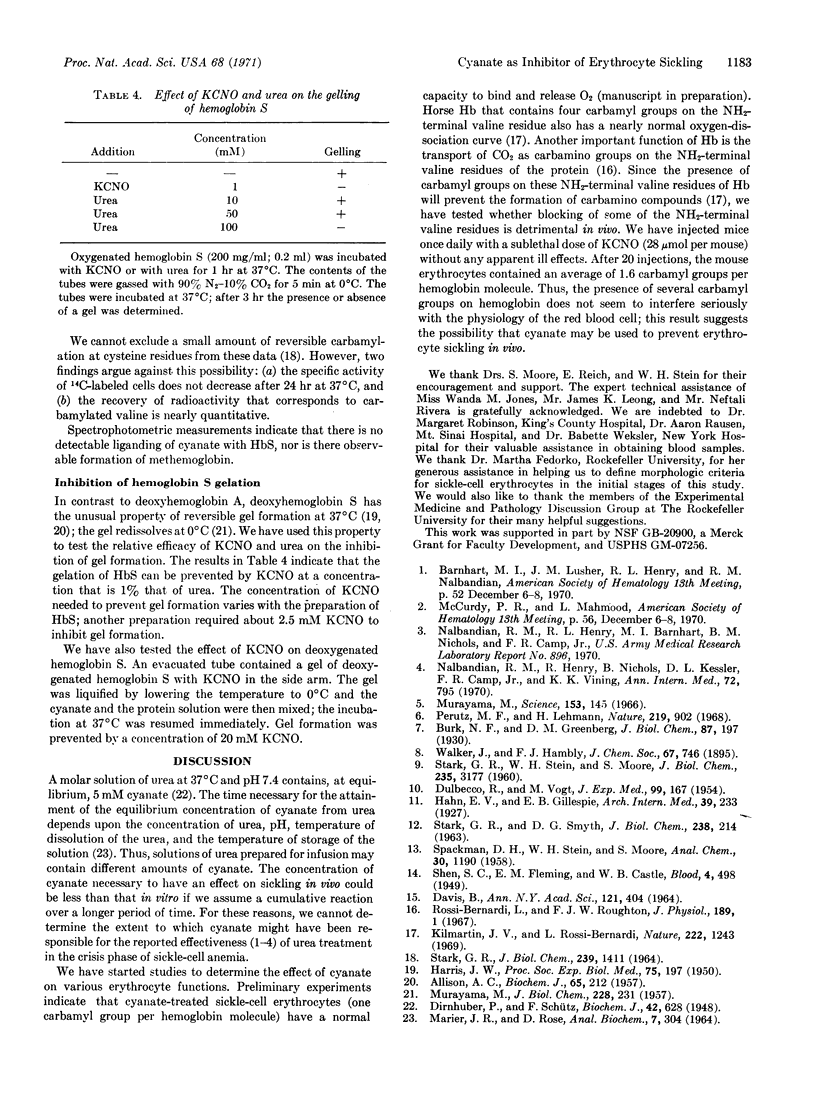
Images in this article
Selected References
These references are in PubMed. This may not be the complete list of references from this article.
- ALLISON A. C. Properties of sickle-cell haemoglobin. Biochem J. 1957 Feb;65(2):212–219. doi: 10.1042/bj0650212. [DOI] [PMC free article] [PubMed] [Google Scholar]
- DAVIS B. J. DISC ELECTROPHORESIS. II. METHOD AND APPLICATION TO HUMAN SERUM PROTEINS. Ann N Y Acad Sci. 1964 Dec 28;121:404–427. doi: 10.1111/j.1749-6632.1964.tb14213.x. [DOI] [PubMed] [Google Scholar]
- DULBECCO R., VOGT M. Plaque formation and isolation of pure lines with poliomyelitis viruses. J Exp Med. 1954 Feb;99(2):167–182. doi: 10.1084/jem.99.2.167. [DOI] [PMC free article] [PubMed] [Google Scholar]
- Dirnhuber P., Schütz F. The isomeric transformation of urea into ammonium cyanate in aqueous solutions. Biochem J. 1948;42(4):628–632. [PMC free article] [PubMed] [Google Scholar]
- HARRIS J. W. Studies on the destruction of red blood cells. VIII. Molecular orientation in sickle cell hemoglobin solutions. Proc Soc Exp Biol Med. 1950 Oct;75(1):197–201. doi: 10.3181/00379727-75-18144. [DOI] [PubMed] [Google Scholar]
- Kilmartin J. V., Rossi-Bernardi L. Inhibition of CO2 combination and reduction of the Bohr effect in haemoglobin chemically modified at its alpha-amino groups. Nature. 1969 Jun 28;222(5200):1243–1246. doi: 10.1038/2221243a0. [DOI] [PubMed] [Google Scholar]
- MARIER J. R., ROSE D. DETERMINATION OF CYANATE, AND A STUDY OF ITS ACCUMULATION IN AQUEOUS SOLUTIONS OF UREA. Anal Biochem. 1964 Mar;7:304–314. doi: 10.1016/0003-2697(64)90135-6. [DOI] [PubMed] [Google Scholar]
- MURAYAMA M. Titratable sulfhydryl groups of normal and sickle cell hemoglobins at O degrees and 38 degrees. J Biol Chem. 1957 Sep;228(1):231–240. [PubMed] [Google Scholar]
- Murayama M. Molecular mechanism of red cell "sickling". Science. 1966 Jul 8;153(3732):145–149. doi: 10.1126/science.153.3732.145. [DOI] [PubMed] [Google Scholar]
- Perutz M. F., Lehmann H. Molecular pathology of human haemoglobin. Nature. 1968 Aug 31;219(5157):902–909. doi: 10.1038/219902a0. [DOI] [PubMed] [Google Scholar]
- Rossi-Bernardi L., Roughton F. J. The specific influence of carbon dioxide and carbamate compounds on the buffer power and Bohr effects in human haemoglobin solutions. J Physiol. 1967 Mar;189(1):1–29. doi: 10.1113/jphysiol.1967.sp008152. [DOI] [PMC free article] [PubMed] [Google Scholar]
- STARK G. R. ON THE REVERSIBLE REACTION OF CYANATE WITH SULFHYDRYL GROUPS AND THE DETERMINATION OF NH2-TERMINAL CYSTEINE AND CYSTINE IN PROTEINS. J Biol Chem. 1964 May;239:1411–1414. [PubMed] [Google Scholar]
- STARK G. R., SMYTH D. G. The use of cyanate for the determination of NH2-terminal residues in proteins. J Biol Chem. 1963 Jan;238:214–226. [PubMed] [Google Scholar]



